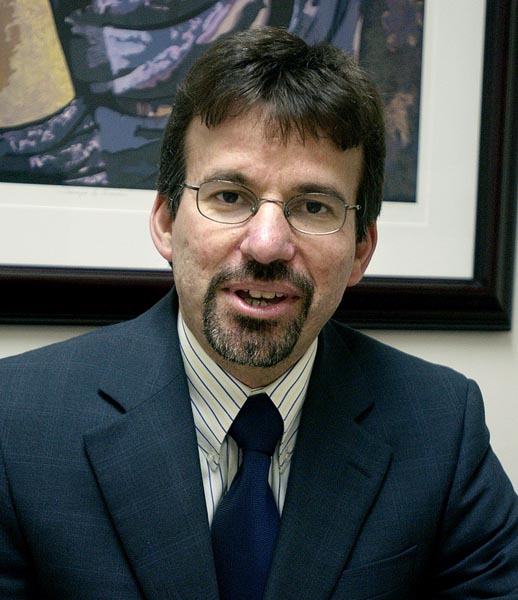Op-Ed: Ireland, Puerto Rico and the credit rating agencies


Author Vicente Feliciano is president of Advantage Business Consulting. (Credit: © Mauricio Pascual)
The similarities between Ireland and Puerto Rico are so numerous that Ireland’s case is of interest for our island.
The global recession of 2008 in Ireland was combined with a slump in property prices. The government had guaranteed deposits not only in banking, but also for bonds issued by financial institutions. The collapse of the housing market brought down the financial sector and the public sector with them. Residents lost their accumulated wealth in property and the stock market, besides a reduction in income as a result of tax adjustments and the collapse of the construction industry.
Ireland was declared speculative credit by Moody’s in July 2011 and returned to investment grade in January 2014. Other credit rating agencies always kept Ireland in investment grade.
Similarities
The Republic of Ireland and the Commonwealth of Puerto Rico have similar political control over economic tools. Both have fiscal autonomy, provided they follow certain rules of either the European Union or U.S. Both determine the expenses in which the taxes collected in its jurisdiction will be used. Neither controls the value of its currency nor can Ireland or Puerto Rico devalue either the euro or the dollar. Neither sets monetary policy nor the interests of its currency. Both maintain free trade with the larger entity to which they belong and it is the larger entity that negotiates trade agreements.
Both based their development on attracting foreign capital through preferential tax treatments. Geographically, they are islands at the outskirt of the larger jurisdiction to which they belong. The population size is similar (4.6 million in Ireland v. 3.6 million in Puerto Rico). In both, there is a marked difference between the Gross Domestic Product (larger) and Gross National Product (smaller) because the profits of foreign companies established in the jurisdiction are part of GDP but not GNP. To add to the similarities, both have had “issues” with their statistics, including their employment statistics.
Fiscal and Debt Crisis
The fiscal crisis and debt through which Ireland went through was much deeper than that of Puerto Rico. As of today, the Irish fiscal indicators remain worse than those of our island.
Ireland’s fiscal deficit in 2010 was €48 billion, of which €31 billion represented part of a financial sector bailout. In terms of percentage of the economy, it was 23 percent of the bank bailout of only that year and 13 percent of other issues. Total public debt (central government and agencies) at the start of fiscal 2010 amounted to €104 billion, but by year-end was €144 billion, meaning that in just one year, it went from 78 percent to 109 percent of GNP. By 2013, the debt amounted to €206 billion, 153 percent of GNP.
The comparable figures for Puerto Rico would have been a deficit of about $25 billion, consisting of $16 billion of the bank bailout and $9 billion of other issues. The reality is that on our island, the bank bailout cost about $5 billion (8 percent of GNP) and was covered by the FDIC. We have never been anywhere near a deficit of $9 billion, even adding the shortcomings of public corporations and retirement plans. The Irish government debt by 2013 would represent $107 billion for Puerto Rico instead of the $70 billion that we have.
The crisis was of such magnitude that Ireland was unable to exit the capital markets where their bond came to trade at an interest of 14 percent. It was necessary to receive funding from the European Union and the International Monetary Fund to avoid default.

Ireland was declared speculative credit by Moody’s in July 2011 and returned to investment grade in January 2014. (Credit: Wikipedia)
The fiscal measures enacted in Ireland to face the crisis included reduction in the number and salaries of public employees, reduction in transfers to the unemployed, increase in income taxes, increased taxes on pensions of retirees and the Value Added Tax value rose from 21 percent to 23 percent, among others.
In Ireland, consensus was sought, but no action was paralyzed while searching for consensus. Initially, the public sector unions opposed to compromise. The government proceeded to implement wage cuts unilaterally, between 5 percent and 15 percent in 2009. Faced in 2010 with a program of further reductions in wages and the possibility of layoffs, the unions opted to negotiate concessions. In June 2010, the Croke Park Agreement was signed. The government agreed not to carry out additional layoffs or wage reductions. The unions agreed not to strike in four years and cooperate with management actions to improve staff productivity, including changes in work rules and employee relocation, plus reductions in some fringe benefits.
Something significant is that the measures in Ireland did not include increases in corporate taxes, even with the pressure exerted by other members of the European Union that supported Ireland with funding and that lost investment vis-à-vis Ireland. There is consensus among the main political parties not to alter the economic model to attract corporate investment at a rate of 12.5 percent.
The explicit vision of the adjustment package was to reduce the consumption of both individuals and the government to generate resources to pay debt, aware of the negative impact it would have on the economic sectors serving domestic demand. At the same time, the sector serving the international market was shielded from additional charges, and it was expected to be this sector, inserted in the global economy, which would drive Ireland forward.
In Puerto Rico, the sectors tied to the global economy (manufacturing, aeronautics, tourism) begin to show signs of recovery. Meanwhile, teachers on our island seek to preclude adjustments in their pensions and offer, as an alternative, additional taxes to the tourism sector.
It is projected that by 2015, the debt/GDP ratio in Ireland will begin to be reduced. At present, the Irish bonds are traded at an interest rate of 3.5 percent. The fiscal deficit target is of 3.7 percent of GNP, which would be equivalent to a deficit of $2.600 billion in Puerto Rico. Government bonds of Puerto Rico carry a near 9 percent interest and we are aiming at zero fiscal deficit at the central government level.
Economy
The economic situation in Ireland when the crisis occurred was much better than in Puerto Rico. They experienced a deep recession, falling 12 percent in the four years from 2008 to 2011. Already in 2012, Ireland showed 1.8 percent growth in GDP, accelerating to 2.7 percent in 2013. This growth, higher than the average in Europe, is what is expected to reduce the debt/GDP ratio in 2015 despite the projected fiscal deficit.
During the period 1994 to 2007, the growth in Ireland’s economy averaged 6.4 percent, similar to the rates observed in Puerto Rico during the most successful period of Operation Bootstrap over half a century ago. The unemployment rate in Ireland in 2006 was 4.6 percent.
The EU forced Ireland to alter its tax incentives’ scheme for manufacturing companies and export services because it discriminated in favor of certain companies. Ireland’s response was to remove the incentives but lower corporate taxes for all companies without discrimination, offering corporate tax rates that are the lowest in Europe and are highly competitive internationally. At present, the rate is 12.5 percent. To compensate, while maintaining a strong structure of social services, other taxes are high. As an example, the Value Added Tax is at 23 percent.
Electricity in Ireland used to have ESB, a government company as the dominant entity. In the mid-2000s, there was a reform enacted of the electricity system that united the Northern Ireland system with the Republic of Ireland. All generators, including ESB, sell electricity to a single, mandatory “pool.” The government body EirGrid, originally part of ESB, manages the transmission and distribution in the Republic of Ireland. The Commission for Energy Regulation oversees the prices at which they purchase and EirGrid transmits. In 2012, ESB had 48 percent of generation capacity, it supplied 36 percent of all customers throughout the island, made a profit of €415 million and total debt amounted to €4.414 million.
Meanwhile, in Puerto Rico, the Electric Power Authority is a monopoly that in 2013 had losses of about $300 million and at present, has a debt burden of approximately $8.6 billion.
Education in Ireland is one of the best in the world, generating a well-prepared workforce. The most recognized international review is the Program for International Student Assessment (PISA). The results of Ireland in 2012 were significantly better than those in the U.S. Among the countries that take the test, Ireland was 20 in mathematics (U.S. 36), 14 in science (U.S. 28), and 7 in reading (U.S. 24). Although Puerto Rico does not participate in PISA, the results of the federal No Child Left Behind program suggest that the results of students in Puerto Rico would be lower than the U.S. results.
While tax incentives are important, PayPal was established in Ireland when it was not yet generating profits. It was later acquired by eBay, which now has an operation of 2,000 people in Ireland. From Ireland, the company handles operations in Europe, Africa and the Middle East. In addition to a large export sector of information technology, Ireland has a large export sector of financial services.

Warner Chilcott was established in 2006 in Fajardo, where it employs about 300 people. (Credit: © Mauricio Pascual)
Like Puerto Rico, Ireland is defending its “cluster” of manufacturing, particularly pharmaceuticals. Contrary to what happened on the island, they managed to develop a strong group of local businesses. An example is Warner-Chilcott with 2,700 employees in Ireland and manufacturing facilities in Puerto Rico. In October 2013, it was purchased by Actavis, one of the global leaders in manufacturing of generics, in a transaction of $8.6 billion.
The labor-force participation rate in Ireland is about 60 percent compared with 40 percent on our island. Thus, the generation of employment and the economic situation has an impact on the majority of the population of Ireland. In Puerto Rico, groups living with federal transfers, pensions or other transfers exceed those constituencies that depend on salaries. The political calculation to choose between raising the consumption tax and the corporation tax is different.
The population has been growing in Ireland. While in 2002 the population was 3.9 million, similar to Puerto Rico, in 2011 it numbered 4.6 million. Although during the 1950s it experienced a net emigration of about 40,000 people per year, during the 2006-2011 period there were 25,000 annual net immigrants, many from Eastern Europe.
Conclusion
Ireland had a difficult situation, only surpassed by the experience of the Great Depression of the 1930s. However, the fundamentals of the economy were good. After four years, despite a much higher government debt than Puerto Rico, Ireland began its recovery. In addition to handling urgent financial issues, Puerto Rico needs to address the structural issues of the economy to move forward.














